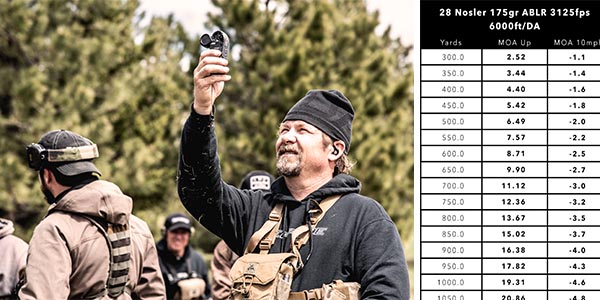Rifle season is just around the corner for us here in Montana, in fact we're already seeing success from antelope opener this past weekend. Surely you've been out shooting already, but if not there's no better time than the present. To help you get ready for success this upcoming season, our in house shooting aficionado, Matt, put together some helpful tips so you don't leave any stone unturned. Check them out, and good luck out there.

#1 Get out and shoot.
Every rifle season, there's always a person at camp who says "my rifle was zeroed last year, it should be fine" and hits the field thinking it's good. When asked about ways to get ready for rifle season, the first thing I always say is to go shoot your rifle... as much as you can. Also, Don't just shoot off a bench! Practice shooting like you would in the field. This could be prone, uphill, downhill, kneeling, supported off a tree or tripod and so on. I also will usually recommend new hunters get a rifle chambered in 6.5 Creedmoor or 308 Win for their first hunting rifle. The ammo is cheap enough to go out and shoot a box or 2 for practice without breaking the bank and those rounds are more than adequate for most game, within reasonable distances.

#2 Have good dope.
This one kind of ties back to #1. In the shooting world, solid DOPE is king. It's short for "data on previous engagement", which is what snipers called it back in the day. These days, it's what your ballistics calculators tell you to adjust your scope by. Theres a number of ways to get this info, but the easiest way is to use a free ballistics calculator online, like this one from Hornady. You can also use a device know as a Kestrel (see picture above) in the field for live ballaistics computing. These devices are extremly accurate, but are a little spendy.
Now, you will need to know a few things before hand, like your bullet's velocity and drag coefficient. The Drag usually can be found on the box or via a quick Google search. To get the velocity, you'll need to shoot through a chronograph of some sort or take your rifle out and shoot it at a known distance or about 500-700 yards. You'll then adjust your scope turret until you're on target. Once you know the elevation adjustment, you can go back to your calculator and adjust the velocity until the adjustment matches what you had to dial for that distance. It's a little crude, but works very well.

#3 You need good glass
Successful hunting during rifle season demands good glass. Whether it's your scope, binos, spotter, or rangefinding device. You can't shoot what you can't see, so we alway recommend going with the best glass you can afford. My personal favorite right now is the Leica Geovid Pro 10x32. It combines Leica's legendary glass quality with a rock solid laser rangefinder, GPS capability and Applied Ballistics computer. This means you can load your rifle into onto the binos and have it read out accurate elevation corrections on the go. To me, these are the best all around LRF binos at the moment. If you need to see further, check out the spotting scopes from Swarovski. For many, they set the benchmark and my personal favorite is the ATX 65mm. It's so light and compact, while still offering excellent glass.

#4 Layers, layers, layers...
We're not the first to say it and we won't be the last, but a solid layering system is 100% crucial for rifle season. It can be 60F and sunny one minute, then 5F and blizzarding out the next. Weather, especially in the Rockies, is wildly unpredictable and harsh. For example, on a recent archery elk hunt, we got hit with a really bad rain storm. It was blowing 30mph plus and the temps dropped into the low 50's, so it got chilly really fast. Thankfully, I always bring rain gear and lightweight insulation, in this case a compressible puffy jacket. The 2 kept me warm and dry for a few hours until the storm moved on. So put some thought into your clothing system, what weather you might encounter and so on. My go to setup for rifle season starts with merino base layers, then the Ascent shirt, Timberline pant, Jetstream Jacket and dew point rain gear from Sitka. As a backup, i also like to keep a small shelter or tarp with me, if I need to get out of the weather.

#5 Take care of your feet.
I know, we're a boot company so you expect us to say this... but it is just plain true. Nothing will ruin your hunt faster than wet, cold, blistered or miserable feet. If you're feet hurt, you're not walking anywhere. Plain and simple. Whenever I hit the field in October and November, there's a pair of our Mountain Tech OTC socks and Beartooth 200g boots on my feet. I've found that combo to be ideal across a wide gamut of conditions. When it gets consistently below 20F or very snowy, I swap the Beartooth's for my 13" Hunter II's.


